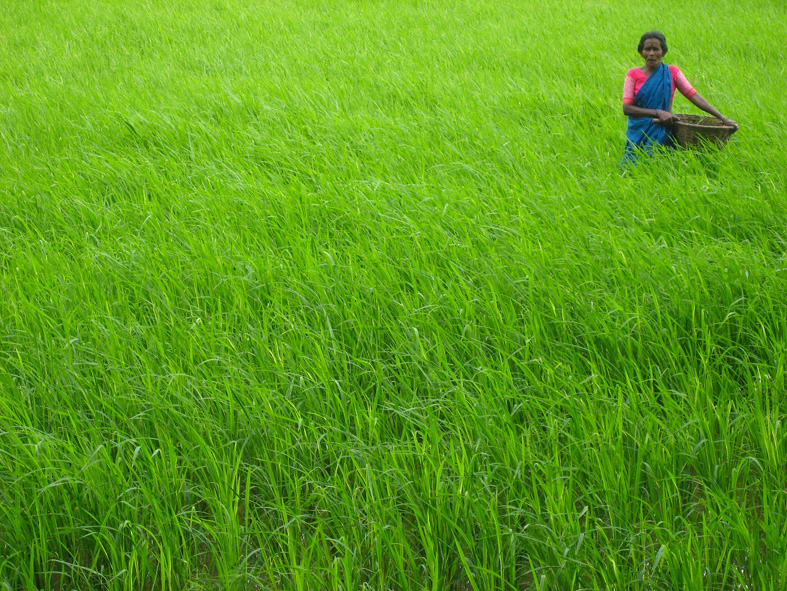5 December 2012
Measuring groundwater recharge could protect rural farmers’ livelihoods
Posted by kramsayer
In the Gangeshwar watershed in Rajasthan, India, farmers are at the mercy of their water supply. They use electrical pumps to capture well water for irrigating fields of wheat, rice, cotton and other crops. But wells often run dry, threatening crops and livelihoods.
Melissa Rohde, now a graduate student in civil & environmental engineering at Stanford, in Palo Alto, California is working to find a simple, cost-effective way to measure water availability and share that knowledge with rural communities. She presented a poster at the American Geophysical Union’s Fall Meeting in San Francisco Tuesday morning, suggesting a new monitoring tool for farmers in remote, semi-arid regions.
Water supply depends on groundwater recharge, the process by which surface water from rain, lakes or rivers is absorbed into underground aquifers, which in turn supply the wells. A common way to figure out how much water is restored to these underground reserves is to measure the concentration of chloride ions. The ions originate in rain and end up in groundwater, remaining dissolved in aquifers even when some of the water evaporates.
But working in Rajasthan, Rohde realized that sending water samples to a lab and waiting for the results of chloride analysis to find out how much groundwater had evaporated took too much time. Rural farmers needed a simple test with immediate results that farmers could take into account as they decide what to plant and in what quantities. “You can’t manage what you can’t measure,” she said.
Rohde and her colleagues decided to focus instead on total dissolved solute (TDS) levels, which can be tested by placing two probes into a well and measuring the resistivity of the water. Rohde found a strong correlation between TDS levels and chloride ion concentration from groundwater samples. She believes that TDS meters, which are easy to operate and cost only $40 each, could be a powerful tool for measuring water availability.
In 2010, Rohde left one of these meters with a local farmer, who diligently recorded TDS levels in his well for two years. “We see this really interesting cyclical trend,” said Rohde. TDS levels decreased dramatically throughout monsoon season, as rainfall diluted the concentration of dissolved solutes in well water. Then levels climbed steadily as water evaporated. Unlike raw data about how much precipitation was occurring or how much groundwater was restored, this pattern said something about how and when water was moving through the system.
The researchers have now partnered with the International Water Management Institute to test the technology further.
“Essentially, what we’re trying to do is create a decision support tool,” said Rohde. They have launched a pilot study, distributing 25 TDS meters to Rajasthani farmers, who will take regular measurements to identify patterns unique to their wells.
Rohde acknowledged that dealing with water scarcity is a complex policy issue, but she hopes this project will offer a bottom-up solution by helping farmers put a monetary value on water and use it effectively. “They’re the ones at the end of the day that turn off and on the pumps,” she said.
-Kelly Servick is a science communication graduate student at UC Santa Cruz



 GeoSpace is a blog on Earth and space science, managed by AGU’s Public Information staff. The blog features posts by AGU writers and guest contributors on all sorts of relevant science topics, but with a focus on new research and geo and space sciences-related stories that are currently in the news.
GeoSpace is a blog on Earth and space science, managed by AGU’s Public Information staff. The blog features posts by AGU writers and guest contributors on all sorts of relevant science topics, but with a focus on new research and geo and space sciences-related stories that are currently in the news.